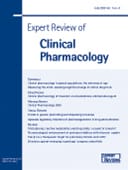
“Parkinson’s disease (PD) is one of the most common neurodegenerative disorders and is characterized by the loss of dopaminergic neurons in the substantia nigra (SN). Although the causes of PD are not understood, evidence suggests that its pathogenesis is associated with oxidative stress and inflammation. Recent studies have suggested a protective role of the cannabinoid signalling system in PD. β-caryophyllene (BCP) is a natural bicyclic sesquiterpene that is an agonist of the cannabinoid type 2 receptor (CB2R). Previous studies have suggested that BCP exerts prophylactic and/or curative effects against inflammatory bowel disease through its antioxidative and/or anti-inflammatory action. The present study describes the neuroprotective effects of BCP in a 1-methyl-4-phenyl-1,2,3,6-tetrahydropyridine (MPTP)-induced murine model of PD, and we report the results of our investigation of its neuroprotective mechanism in neurons and glial cells. In the murine model, BCP pretreatment ameliorated motor dysfunction, protected against dopaminergic neuronal losses in the SN and striatum, and alleviated MPTP-induced glia activation. Additionally, BCP inhibited the levels of inflammatory cytokines in the nigrostriatal system. The observed neuroprotection and inhibited glia activation were reversed upon treatment with the CB2R selective antagonist AM630, confirming the involvement of the CB2R. These results indicate that BCP acts via multiple neuroprotective mechanisms in our murine model and suggest that BCP may be viewed as a potential treatment and/or preventative agent for PD.” https://www.ncbi.nlm.nih.gov/pubmed/28684694

 “Redox imbalance may lead to overproduction of reactive oxygen and nitrogen species (ROS/RNS) and subsequent oxidative tissue damage which is a critical event in the course of neurodegenerative diseases. It is still not fully elucidated, however, whether oxidative stress is the primary trigger or a consequence in process of neurodegeneration.
Recent Advances: Increasing evidence suggests that oxidative stress is involved in the propagation of neuronal injury and consequent inflammatory response, which in concert promote development of pathological alterations characteristic of most common neurodegenerative diseases.
Critical Issue: Accumulating recent evidence also suggests that there is an important interplay between the lipid endocannabinoid system (ECS; comprising of the main
“Redox imbalance may lead to overproduction of reactive oxygen and nitrogen species (ROS/RNS) and subsequent oxidative tissue damage which is a critical event in the course of neurodegenerative diseases. It is still not fully elucidated, however, whether oxidative stress is the primary trigger or a consequence in process of neurodegeneration.
Recent Advances: Increasing evidence suggests that oxidative stress is involved in the propagation of neuronal injury and consequent inflammatory response, which in concert promote development of pathological alterations characteristic of most common neurodegenerative diseases.
Critical Issue: Accumulating recent evidence also suggests that there is an important interplay between the lipid endocannabinoid system (ECS; comprising of the main 
 “The complexity of the endocannabinoid (eCB) system is becoming better understood and new drivers of eCB signaling are emerging. Modulation of the activities of the eCB system can be therapeutic in a number of diseases.
Research into the eCB system has been paralleled by the development of agents that interact with
“The complexity of the endocannabinoid (eCB) system is becoming better understood and new drivers of eCB signaling are emerging. Modulation of the activities of the eCB system can be therapeutic in a number of diseases.
Research into the eCB system has been paralleled by the development of agents that interact with  “1. Preparations from
“1. Preparations from